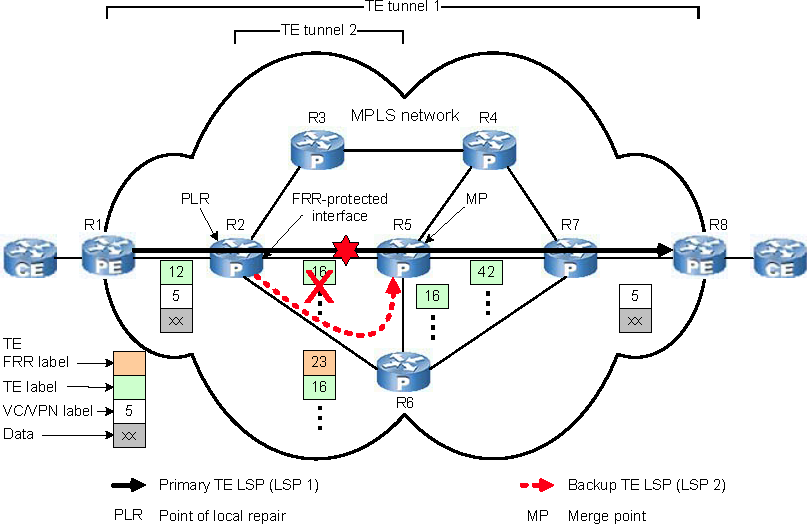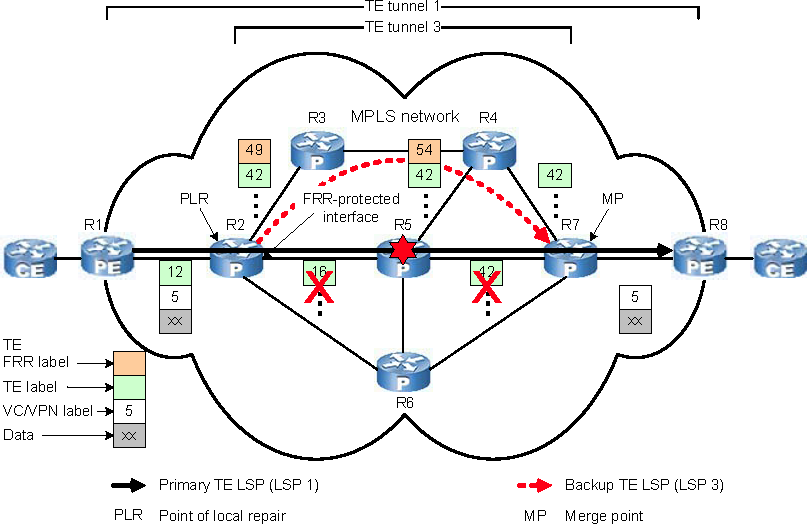FRR switching for a failed link and FRR switching for a failed node show a link (R2 -> R5) and a node (R5) that have been configured with fast reroute (FRR) protection. The primary tunnel, R1 -> R8, is protected by two backup tunnels, R2 -> R5 and R2 -> R7.
Stated in a different way, the primary TE LSP, R1 -> R2 -> R5 -> R7 -> R8, is protected by two backup TE LSPs, R2 -> R6 -> R5 and R2 -> R3 - > R4 -> R7.


FRR, which is defined in RFC 4090, is a network recovery technique that has a restoration time within the range of 50-60 milliseconds. The FRR restoration time for a failed link is less than 50 milliseconds, whereas the FRR restoration time for a failed node is somewhat longer and depends on the failure detection time.
FRR is a form of LSP local repairing, where a failed LSP is recovered automatically by the device that is located directly upstream from the point of the failed link or node. This device, known as the headend or point of local repair (PLR) for the FRR, is R2 in FRR switching for a failed link and FRR switching for a failed node. The PLR selects an LSP from a preconfigured list of backup TE LSPs onto which to route the traffic from the primary path.
The PLR swaps the incoming label and pushes a TE FRR label onto the label stack. The backup TE LSP terminates on the device known as the merge point (MP), where the traffic rejoins the primary path.